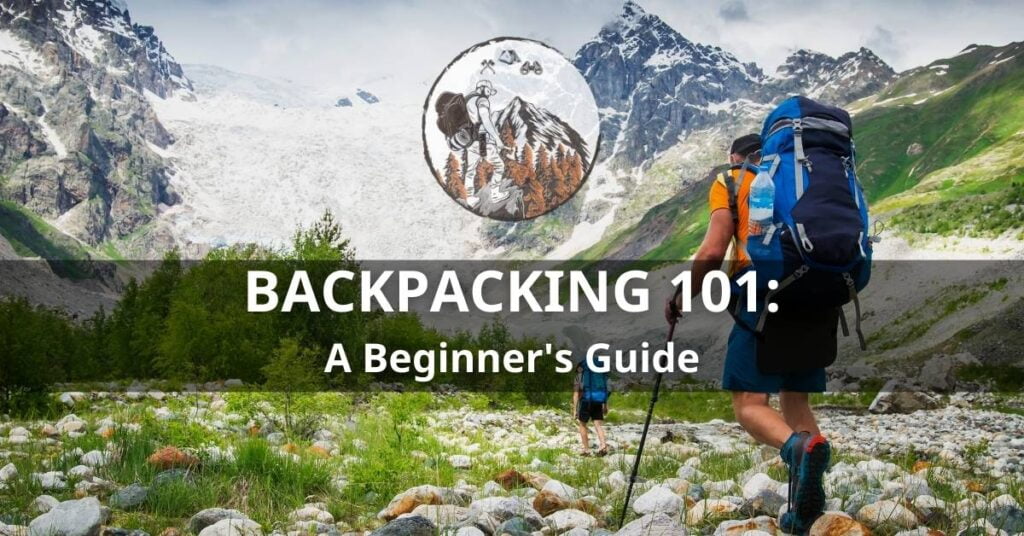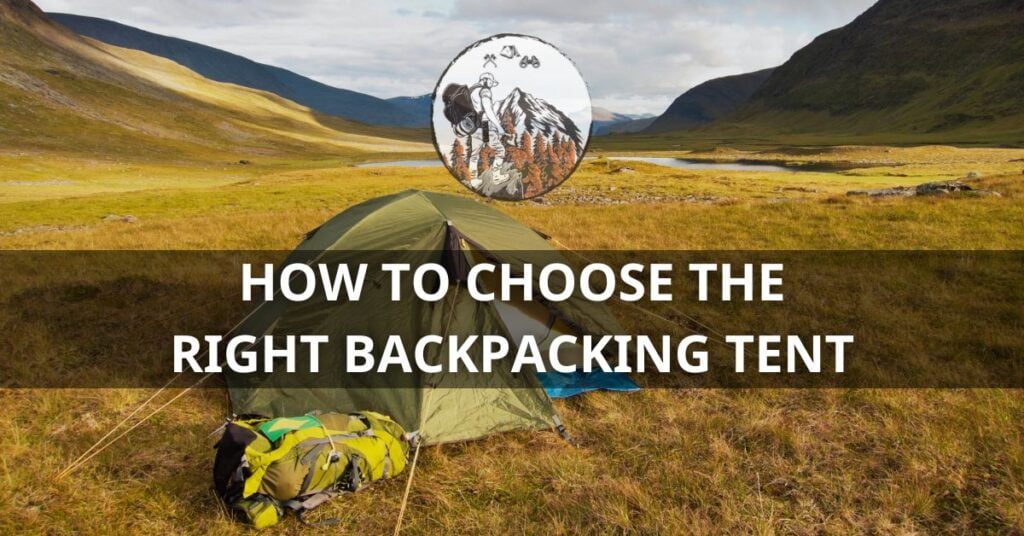Backpacking is a popular form of travel that is loved by many adventure enthusiasts. “Backpacking 101” is your ultimate guide to discovering the joy of traveling to different destinations on a budget, carrying all your essentials in a single backpack. This type of travel allows you to have more freedom and flexibility in choosing the places you want to visit, how long you want to stay, and what activities you want to do.
In this guide, we will provide you with all the information you need to know about backpacking and how to have an amazing experience on your first trip.
Definition of Backpacking
Backpacking is a form of budget travel that involves carrying all your belongings in a backpack while traveling to different destinations. Unlike traditional travel, backpacking allows you to have more control over your itinerary and spend less money on transportation and accommodation. It is often associated with solo or small-group travel, but it can also be done with friends or family.
Importance of Backpacking for Beginners
Backpacking offers a unique and enriching experience for beginners. It allows you to step out of your comfort zone, explore new places, and learn about different cultures. It is also a great way to challenge yourself physically and mentally while creating unforgettable memories.
Benefits of Backpacking
Aside from the thrill and sense of adventure, backpacking also offers numerous benefits for beginners. These include:
- Cost-effective travel: Backpacking can be a more affordable way to travel compared to traditional methods. By staying in hostels or camping, cooking your meals, and using public transportation, you can save money on accommodation, food, and transportation costs.
- Flexibility: As a backpacker, you have the freedom to create your own itinerary and change plans as you go. You are not tied down to a strict schedule or tour group, allowing you to fully immerse yourself in the destination.
- Cultural immersion: Backpacking allows you to interact with locals and experience their culture firsthand. By staying in hostels or homestays, trying local cuisine, and participating in cultural activities, you can gain a deeper understanding of the country you are visiting.
- Personal growth: Backpacking can push you out of your comfort zone and help you develop important skills such as independence, adaptability, and problem-solving. It also allows for self-discovery and personal reflection.
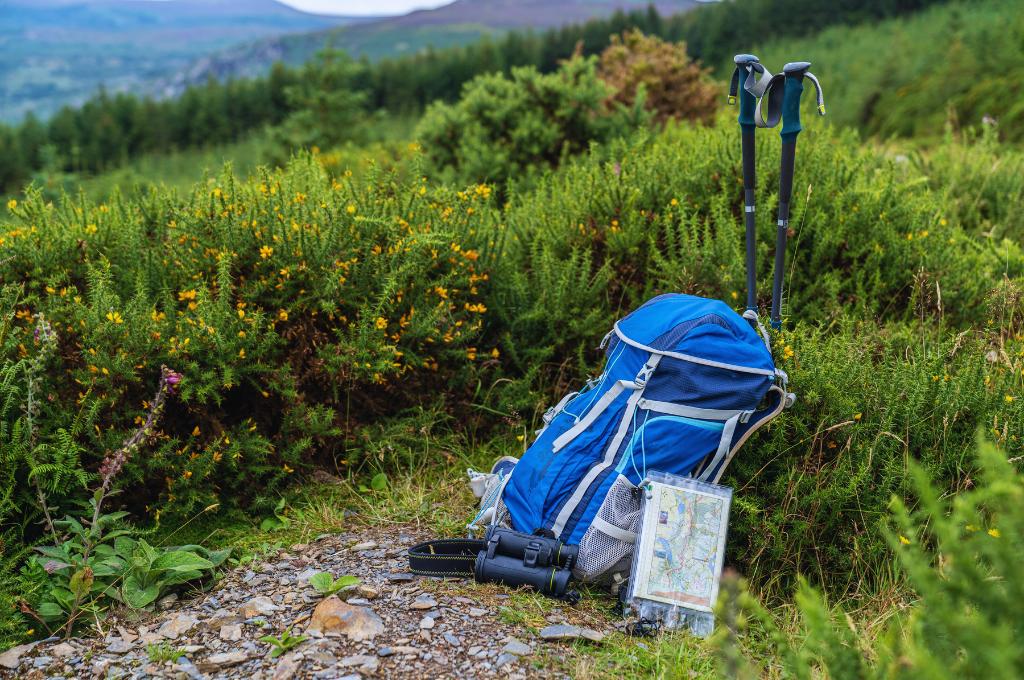
Table of Contents
Embrace the thrill of adventure with “Backpacking 101”
Before you embark on your first backpacking trip, there are a few important things to consider.
A. Essential Gear for Backpacking
The most important item for backpacking is, of course, your backpack. It should be durable, comfortable to carry, and the right size for your needs. Other essential items include a tent or sleeping bag, a lightweight cooking set, water bottles, comfortable shoes, and appropriate clothing for the weather.
1. Backpack Selection
When choosing a backpack, consider the length of your trip, your body size and shape, and the type of terrain you will encounter. It is recommended to try on different backpacks and walk around with them before making a purchase.
2. Sleeping Bags and Tents
Invest in a high-quality sleeping bag that is lightweight and compact. For tents, look for one that is easy to set up and provides sufficient shelter from the elements.
3. Cooking Equipment
A lightweight cooking set with a stove, pot, and utensils is essential for preparing meals while on the go. Look for one that is durable and easy to clean.
B. Clothing and Footwear
Pack clothing that is versatile, comfortable, and appropriate for the weather. Avoid bulky items and opt for lightweight and quick-drying materials. As for footwear, choose shoes that are comfortable to walk in for long periods and can withstand various terrains.
1. Layering Techniques
Layering is key when it comes to packing clothing for backpacking. It allows you to adjust to changing temperatures and weather conditions. Start with a base layer, add a mid-layer, and finish with an outer layer.
2. Choosing the Right Footwear
Invest in a good pair of hiking boots or trail shoes that are comfortable and provide good support. Consider waterproof options if you will be encountering wet conditions.
C. Planning Your Backpacking Trip
When planning your trip, consider the following factors:
1. Destination and Route
Choose a destination that aligns with your interests and budget. Research the route to get an idea of how long it will take and what sights you can see along the way.
2. Budgeting
Create a budget for your trip and make sure to stick to it. Factor in transportation, accommodation, food, and any activities you plan on participating in.
3. Safety Precautions
Always prioritize safety when backpacking. Inform someone of your itinerary and make sure to have travel insurance. Be aware of any potential dangers in the area and take necessary precautions.
4. Understanding Trail Difficulty
Before embarking on a backpacking trip, be sure to research the difficulty level of the trail. This will help you determine if it is suitable for your fitness level and experience.
5. Considering Seasonal Factors
Be aware of the weather and seasonal factors in your chosen destination. This will help you pack appropriate clothing and gear, as well as plan for any potential challenges.
Physical Preparation
Backpacking can be physically demanding, so it is important to prepare your body beforehand.
A. Conditioning Exercises
Incorporate exercises that will strengthen your legs, core, and upper body. This will help you carry your backpack for extended periods and navigate through different terrains.
1. Cardiovascular Workouts
Backpacking involves a lot of walking, so building your endurance through cardio exercises such as running, cycling, or swimming is important.
2. Strength Training
Include exercises that target your legs and core, such as squats, lunges, and planks. These will help you carry your backpack and maintain good posture while hiking.
B. Health and Safety Tips
1. Importance of Hydration
Proper hydration is crucial when backpacking. Make sure to drink plenty of water throughout the day, especially in hot and humid climates.
2. Basic First Aid Skills
It is always helpful to have basic first-aid skills when backpacking. Carry a first aid kit and know how to handle minor injuries or illnesses.
3. Understanding Altitude Sickness
If you will be hiking in high altitudes, be aware of the symptoms of altitude sickness and know how to prevent it. Stay hydrated, take frequent breaks, and avoid ascending too quickly.
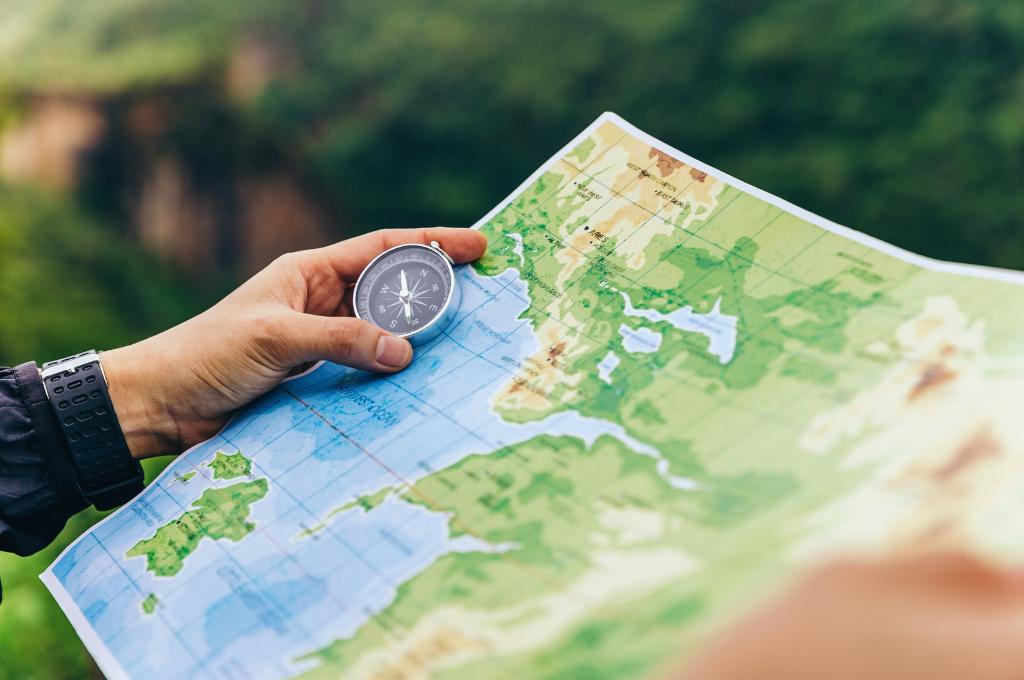
Navigation Skills
While technology has made navigation easier, it is still important to have basic navigational skills when backpacking.
A. Reading Maps and Using a Compass
Learn how to read a map and use a compass to navigate through your trip. This will come in handy if you encounter any technical difficulties with technology or get lost.
B. GPS Navigation Basics
Familiarize yourself with GPS navigation before your trip, but also be prepared for potential technical difficulties. Carry a map and compass as backup.
C. Understanding Trail Markers
Pay attention to trail markers and know how to interpret them. They can provide valuable information about the trail and keep you on track.
Leave No Trace Principles
As outdoor enthusiasts, it is our responsibility to protect and preserve the environment we explore. Follow these Leave No Trace principles to minimize your impact while backpacking:
A. Minimizing Environmental Impact
Pack out all trash and leave the area better than you found it. Respect wildlife and their habitats by observing from a safe distance.
B. Proper Waste Disposal
Dispose of waste properly, following Leave No Trace principles. This includes human waste, food scraps, and any other trash.
C. Respect for Wildlife
Do not disturb or feed wildlife and keep a safe distance. Dispose of food scraps properly to avoid attracting animals.

Meal Planning and Cooking
Planning and preparing meals while backpacking can be challenging but with the right techniques, it can be enjoyable.
A. Meal Planning Tips
Plan meals that are lightweight, easy to prepare, and provide enough energy for your trip. Consider dehydrated or freeze-dried options to minimize weight.
B. Lightweight and Nutrient-Dense Foods
Choose foods that are high in nutrients and calories, but lightweight to carry. Some examples include nuts, dried fruits, jerky, and instant oatmeal.
C. Cooking Techniques for Backpacking
Invest in a lightweight and compact camping stove to cook your meals while backpacking. Practice cooking with it before your trip to get familiar with its functions.
D. Safe Food Handling in the Wilderness
Proper food handling and storage are important to prevent foodborne illnesses while backpacking. Keep perishable foods in airtight containers and practice proper hygiene when preparing meals.
Water Management
Access to clean drinking water is essential while backpacking. Follow these tips to ensure you have enough water for your trip:
A. Purification Methods
Carry a water filter or purification tablets to treat any water obtained from natural sources. Boiling water is also an option, but it requires additional equipment.
B. Hydration Strategies
Drink water frequently throughout the day, even if you do not feel thirsty. Remember to drink every hour or use a hydration bladder for easy access.
C. Water Conservation
Be mindful of water usage by conserving whenever possible. This includes washing dishes, personal hygiene, and cooking.
D. Emergency Water Sources
Always have a backup plan for obtaining water in case your planned sources are not available. This could include melting snow, collecting rainwater, or obtaining from natural sources with proper purification.
E. Identifying Safe Water Sources
Learn how to identify safe water sources in the wilderness. Avoid stagnant or discolored water and opt for running water when possible.
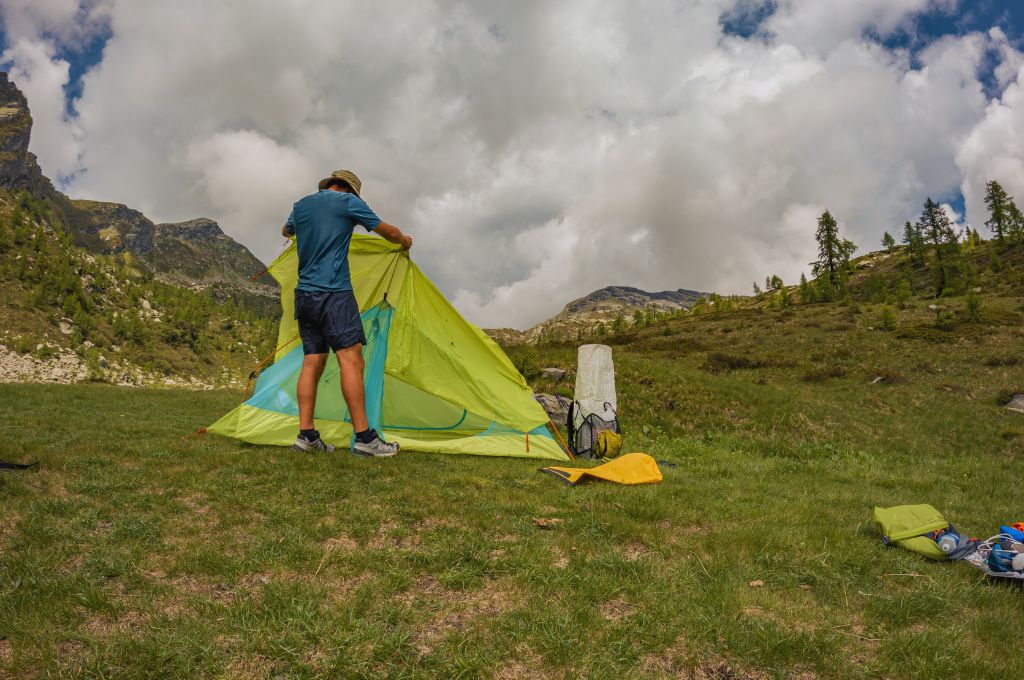
Campsite Selection and Setup
Choosing the right campsite and setting up your gear properly can make a big difference in your overall backpacking experience.
A. Choosing a Suitable Campsite
Look for a level and dry area to set up your campsite. Avoid setting up near water sources or on fragile vegetation.
B. Setting Up Your Tent
Practice setting up your tent before your trip to ensure you can do it efficiently. Use a groundsheet or tarp under your tent for added protection and consider investing in lightweight stakes.
C. Hanging a Bear Bag
Proper food storage is important to avoid attracting bears and other wildlife. Hang a bear bag at least 100 yards from your campsite and follow proper techniques to prevent animals from accessing it.
D. Campfire Safety
If allowed, build a campfire in designated fire rings or pits. Always keep a bucket of water nearby and fully extinguish the fire before leaving your campsite.
Dealing with Emergencies
A. Creating an Emergency Plan
Before your trip, create an emergency plan and make sure all members of your group are aware of it. This should include designated meeting points, emergency contacts, and procedures for different scenarios.
B. Signal for Help Techniques
Learn how to signal for help in case of an emergency. This can include using a whistle, a mirror, or signaling with rocks or branches.
C. First Aid Basics
Carry a first aid kit and know how to handle minor injuries or illnesses. Consider taking a wilderness first aid course for more advanced skills before your trip.
D. Dealing with Wildlife Encounters
Be prepared and know how to handle wildlife encounters in case they happen. Stay calm, make noise, and slowly back away while avoiding eye contact.
C. Emergency Shelter Building
In case of a serious emergency, know how to build an emergency shelter using natural materials or with the items in your backpack. This can help protect you from the elements and keep you warm until help arrives.
Connecting with Nature
Backpacking is a great opportunity to disconnect from technology and connect with nature. Take the time to appreciate your surroundings and leave no trace behind.
A. Mindful Backpacking Practices
Practice mindfulness while backpacking by being present in the moment and appreciating your surroundings. Take breaks to sit and observe nature, listen to the sounds of the wilderness, and take photos or journal about your experience.
B. Wildlife Observation Tips
Observe wildlife from a safe distance and avoid disturbing them. Bring binoculars or a zoom lens for better viewing while keeping your distance.
C. Stargazing in the Wilderness
Take advantage of the dark skies in remote areas for stargazing. Bring a star chart or download a stargazing app to identify constellations and planets in the sky.
Backpacking Etiquette
Respect the wilderness and fellow backpackers by following these etiquette guidelines:
A. Respecting Other Hikers
Be courteous and yield to others on the trail. Leave enough space when passing other hikers and be mindful of their experience.
B. Trail Courtesy
Stay on designated trails to avoid damaging vegetation and minimize impact on the environment. If using trekking poles, be mindful of others around you and avoid hitting them.
C. Group Dynamics
Communicate effectively and make decisions as a group. Encourage each other, share responsibilities, and listen to everyone’s needs and concerns.
Budgeting for Backpacking
Backpacking can be an affordable way to explore the great outdoors. Consider these tips for budgeting your trip:
A. Cost Breakdown
Factor in the cost of gear, transportation, food, and permits when planning your budget. Consider borrowing or renting gear to save on costs.
B. Affordable Gear Options
Invest in quality gear, but also consider affordable options such as buying used or joining gear swap groups. Research and compare prices before making purchases.
C. Money-Saving Tips for Backpackers
Save money by preparing your meals, camping for free in backcountry areas, and taking advantage of discounts and deals. Be creative and resourceful when it comes to saving money on your trip.
Solo Backpacking Tips
Solo backpacking can be a rewarding and empowering experience, but it also comes with its own set of challenges. Consider these tips for solo trips:
A. Safety Measures for Solo Hikers
Take extra precautions for safety when backpacking alone. Let someone know your itinerary, check in regularly, and be prepared for emergencies.
B. Enjoying Solitude in Nature
Embrace the solitude and take time for self-reflection while backpacking alone. Use this opportunity to disconnect from technology and enjoy the peace of nature.
C. Building Confidence as a Solo Backpacker
Solo backpacking can help build confidence and self-reliance. Start small with day trips before venturing out on longer solo expeditions. Always trust your instincts and be prepared for any challenges that may arise.
Popular Backpacking Destinations
There are countless beautiful backpacking destinations to explore around the world. Some popular options include:
A. Scenic Trails for Beginners
For beginner backpackers, consider scenic trails such as the Appalachian Trail, Pacific Crest Trail, or Colorado Trail. These well-maintained and marked trails offer stunning views and a variety of terrain.
B. National Parks in the U.S.
From the Canadian Rockies to the Swiss Alps, there are numerous national parks and wilderness areas around the world that offer unforgettable backpacking experiences. Do your research and plan accordingly for these international trips.
C. International Backpacking Opportunities
Some popular international backpacking destinations include the Inca Trail in Peru, the Tour du Mont Blanc in France and Switzerland, and the Overland Track in Australia. Make sure to research rules and regulations for these areas before embarking on your trip.
Documenting Your Backpacking Journey
Capture and preserve memories from your backpacking trip by documenting it in different ways:
A. Photography Tips
Take stunning photos of your backpacking trip by experimenting with different angles, lighting, and composition. Consider bringing a lightweight tripod for stability.
B. Journaling Techniques
Journal about your experience to reflect on your journey and preserve memories. Write about your thoughts, feelings, and observations during the trip. Consider sketching or drawing as well.
C. Sharing Your Experience on Social Media
Share your backpacking journey with others by posting updates and photos on social media. Use hashtags to connect with other backpackers and inspire others to get outdoors. Remember to be mindful of internet access and connectivity while in remote areas.
Reviewing Your Backpacking Gear
After your backpacking trip, take the time to review and reflect on your gear choices. Consider these questions:
A. Regular Maintenance Practices
When was the last time you checked and replaced your gear? Make sure to regularly clean, waterproof, and repair your gear to ensure it is in good condition for future trips.
B. Upgrading Your Gear
Did you encounter any challenges or discomfort due to your gear? Consider upgrading to more durable or lightweight options for your next trip.
C. Sustainable Gear Options
Choose gear made from sustainable materials and consider the environmental impact of your purchases. Look for brands that prioritize sustainability and give back to conservation efforts.
Tip for Beginner Backpackers
If you’re a beginner backpacker, don’t be intimidated! Start with shorter trips and gradually build up to longer expeditions. Do your research, ask for advice from experienced backpackers, and have fun!
Conclusion
“Backpacking 101” serves as your comprehensive roadmap to unlocking the extraordinary world of budget travel, adventure, and self-discovery. As you embark on this thrilling journey, remember that backpacking is not just a mode of exploration; it’s a lifestyle that fosters independence, adaptability, and personal growth.
From the essential gear selection to physical preparation, navigation skills, and embracing nature, this guide equips you with the tools to create lasting memories while minimizing your impact on the environment. Embrace the essence of Backpacking 101 and let the adventures begin!
Thanks for joining us—share this guide with others to inspire more adventures. Safe travels and may your backpacking experiences be filled with wonder and growth!
Happy trails and happy backpacking!
FAQs (Frequently Asked Questions)
Q. What are the must-have items for a beginner backpacker?
A well-fitting backpack
Appropriate footwear
Tent and sleeping bag
Water filter or purification system
Food and appropriate cooking gear
First aid kit
Q: What is backpacking, and how does it differ from traditional travel?
Backpacking is a form of budget travel where you carry all your belongings in a backpack, providing more control over your itinerary and often costing less than traditional travel methods.
Q: What are the key benefits of backpacking for beginners?
Backpacking offers beginners a unique and enriching experience, promoting personal growth through cost-effective travel, flexibility in itinerary, cultural immersion, and the thrill of adventure.
Q: What essential gear do I need for backpacking, especially regarding backpack selection and sleeping arrangements?
Essential gear includes a durable backpack, a lightweight and compact sleeping bag, and a tent that is easy to set up. When choosing a backpack, consider trip length, body size, and terrain.
Q: What physical preparation is necessary for backpacking, and what health and safety tips should I follow?
Physically prepare with conditioning exercises, including cardio and strength training. Stay hydrated, possess basic first aid skills, and understand altitude sickness if hiking in high altitudes.
Q. What should I do in case of encountering wildlife on the trail?
Stay calm and give animals plenty of space.
Make noise to alert them of your presence.
Follow safety protocols, such as carrying bear spray or using bear canisters for food storage.

